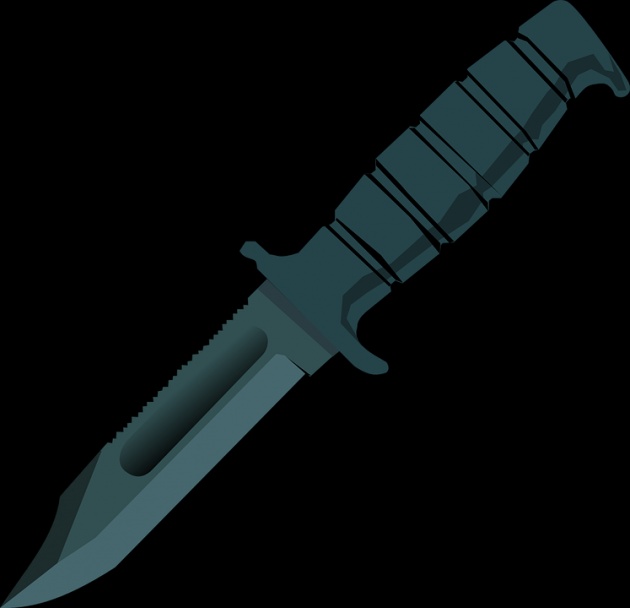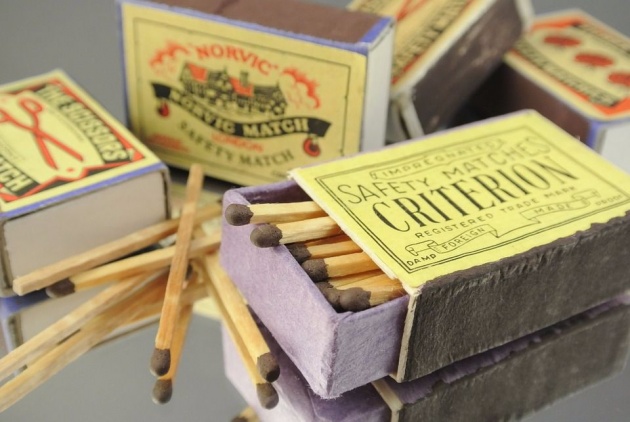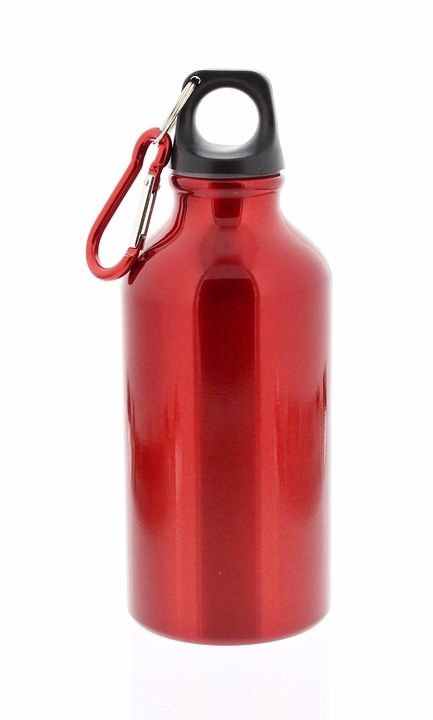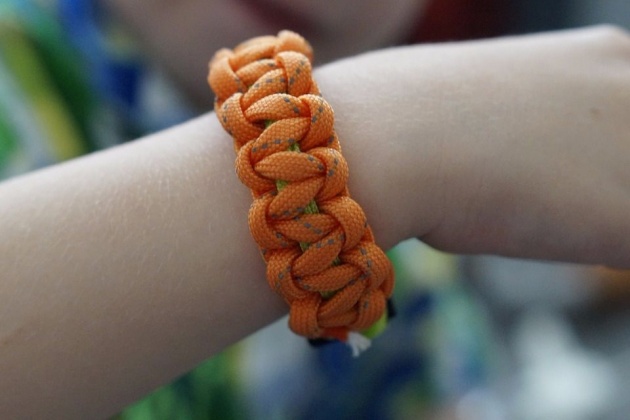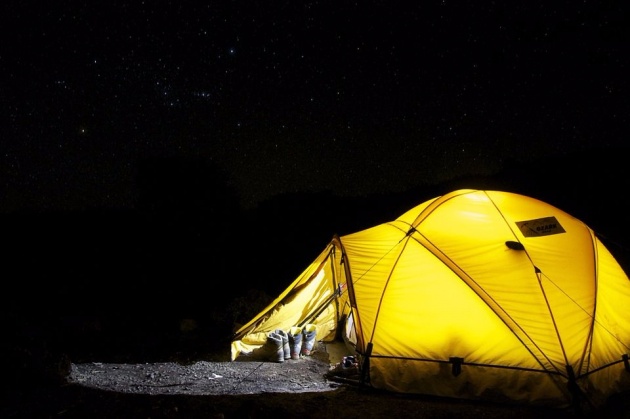Survival
Hi, this topic is about survival or what I synonymously term as prepping. Prepping is a thing nowadays with the rising popularity of apocalyptic scenarios in the media like the zombiepocalypse or real life events like wars or drought and famine. Prepping means preparing for any disaster be it natural or man-made causes. The term can also be stretched out to include surviving in the wilderness or in a dilapidated urban setting.
This type of preparation requires basic equipment for you to survive. I’ll be talking about the tools you need and not the basic things (rule of 3 in the prepping world) you need in order to survive, like food, water and shelter. (Most of) the tools you need can be seen in your good ol’ kitchen but if you want a fancier get up you can always buy yours at specialty stores. In my country, though, it hasn’t been a big thing but there are shops, like the Parashop Manila, where you can buy you gear at a reasonable price.
What is the “Five Cs?”
Before I give you (or post another blog about) tips on what tool to have, I first need to discuss what the 5 Cs of survival are. These are five words which start with the letter ‘C’. Dave Canterbury of Dual Survival came up with this easily remembered concept and it’s been a gospel to the survivalists, bushcrafters, and preppers out there. There is a hierarchy as to what is the most important of the 5 (actually, you only need the most important one), but you need these five in order to make surviving easier. So here’s the list:
1. Cutting
Tactical Knife (from: pixabay.com)
This is the most important tool to have in any survival situation. If there’s only one thing you need you need to bring, bring a knife or any cutting tool you have. It should be reliable enough to cut through any type of food, thin metal (like a tin can), threads for sewing clothes or stitches, hides for making clothes, cords for making shelter, twigs for making fire, etc. You need this because it’s the most versatile tool to have as it can virtually replace a can opener, bottle opener, saw, and other cutting tools out there.
2. Combustion
Matches (from pixabay.com)
I’m no arsonist, but this ‘C’ has the most fascinating tools for me out of the bunch because there are numerous types and methods to make fire. Combustion, or fire, is a necessity in the wilderness: it cooks food, sterilizes water, and gives warm through the night. It can even drive away animals in the wild. Without fire you’ll be dead overnight because of hypothermia, especially in countries with cold climates. OK, I’m stretching it, but this is not uncommon. . There are tons of preppers who will advise you to be equipped with five different ways to start a fire, because if one fails, you can always have a ready back-up. Also, one fire making tool is not reliable than the other in a specific situation, so it’s best to know what to use in any case.
This is off-topic but I’ll share anyway: you shouldn’t light a fire when inside an enclosed space without any ventilation because you might die of carbon monoxide poisoning.
3. Container
Water Bottle (from pixabay.com)
Water and food are important in surviving. Sure, you can live with three days without water and three weeks without food, but doing so will push you through the limits and you would not be able to do things efficiently. You will live but live in a vegetative state and ‘fore you know it, you’ll be six feet under. Death by dehydration is also one of the crucial problems campers face. This is why container is on the list because you need to store in water for you to boil and drink, and food for you to reserve to eat for later.
4. Cordage
Paracord Bracelet (from pixabay.com)
In the rule of 3, you cannot live without shelter after 3 hours in a harsh environment, so cords, threads, and such types are important to be always with you. You use it to tie up branches, make a fishing line (to fish, for food), hang up food to a branch so it won’t be eaten by bears or other animals, rappel down, make a tourniquet, make snares, sew up wounds, sew up torn clothes, etc. This is how important cordage is.
5. Cover
Dome Tent (from pixabay.com)
I made this the least important of the five because you already have cover which are your clothes. But out in the wild, you need another layer of cover like a heavy jacket, a blanket or a makeshift shelter. Hypothermia is deadly so you need something to keep your body warm. Cover is also important to protect you from the outside elements such as rain, storm, even hail. It can also keep you safe from big predators. You’ll never know when you’ll get rescued so it’s best to prepare yourself for cover.
In Case You Forget…
For cutting: If all else fails, do what our ancestors did in the past, sharpen a round-shaped stone until it forms an edge that looks like an arrow tip or break a stone lengthwise with another stone (as shown in the video):
For combustion: If you forget to bring any fire-making tool (because it’s prohibited in your carry on) and you got stuck in a deserted island, you can make a bow drill. It’ll take a long while to start a fire in this makeshift tool but this is the next best thing to a match in a survival sitch.
For container: make a container for water out of animal hide or big leaves. You don't need to sew it just shape it into a bowl, puncture a small hole on the four edges, and tie up with cord.
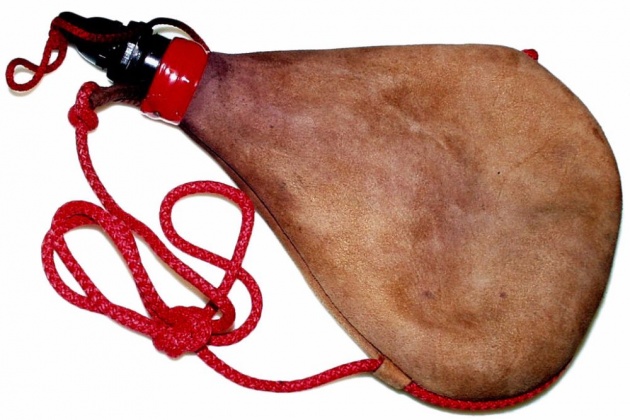
Wineskin (from wikipedia.org)
For cordage: find a thin stem and twist it into three. Test its strength by stretching it as hard as you can. If it breaks, it’s not good for cordage so look for another plant.
For cover: gather leaves (waterproof leaves, the better) and thin branches to make shelter. There are numerous videos on youtube.com to make shelter out of these.
Note: I do not recommend going this route as it will sap out your remaining energy in the wilderness. The first few hours is important when you’re stuck or lost in the wild because in this time frame, you have the necessary energy to find food, make shelter and seek help. It’s best to be prepared. So you should invest in the five Cs.
-----
Disclaimer: I do not own pictures and videos shown here. My write up is 100% unique, checked with this plagiarism checker.

